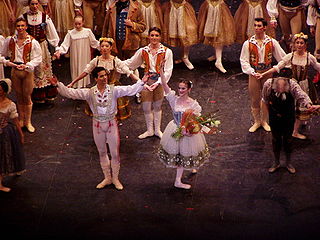 As a choreographic work which does not end in death for the main protagonists, Coppélia is a light-hearted comedic ballet, with a narrative which delights audience with its humour, magic and a happy ending.
As a choreographic work which does not end in death for the main protagonists, Coppélia is a light-hearted comedic ballet, with a narrative which delights audience with its humour, magic and a happy ending.
Our heroine Swanilda is a feisty villager who isn’t very happy when she spots her beau, Franz, making eyes at a mysterious female figure high in a window of Dr Coppelius’ workshop.
The reserved beauty later is discovered to be the mechanical doll Coppélia by Swanilda and her girlfriends, when they find themselves inside the workshop. Having found the answers to their questions, they amuse themselves at Franz’s expense, delighted that he should be declaring his love for a mere doll.
Meanwhile, Franz has also found his way into Dr Coppelius’ abode, searching for Coppélia. The intruding girls are discovered by Dr Coppelius and flee, bar Swanilda who quickly hides. Dr Coppelius, after a short outburst at discovering Franz too, rethinks his strategy and invites Franz to drink [poison] with him, tipping his away and allowing Franz to submit to unconsciousness. Dr Coppelius is seemingly alone to care for his prized doll Coppélia, who we discover is Swanilda, taking on her role in the doll’s clothes.
Chaos ensues, with Dr Coppelius believing he has brought his beloved creation to life. Following two engaging solos from Swanilda/Coppélia, Franz is finally woken, and the lovers escape. Depending on the interpretation of the production by different ballet companies, the extent of remorse felt for Dr Coppelius varies! Act 3 sees a town celebration take place, with solos by Dawn, Prayer, Morning Hours, Working Hours and the introduction of the new bell, a cause for a party. In some versions of the ballet, Dr Coppelius is reunited with the town who have rejected his odd and introverted ways; a happy ending for all.
Image courtesy of Wikimedia Commons
